SYNTHETIC KNOWLEDGE: 3D PRINTED TEXTILES
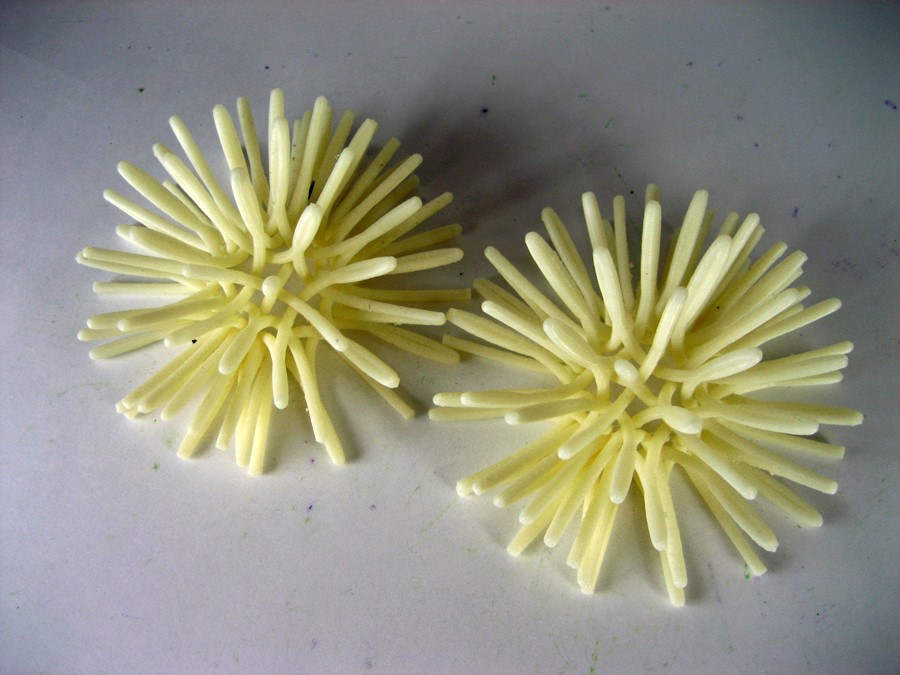
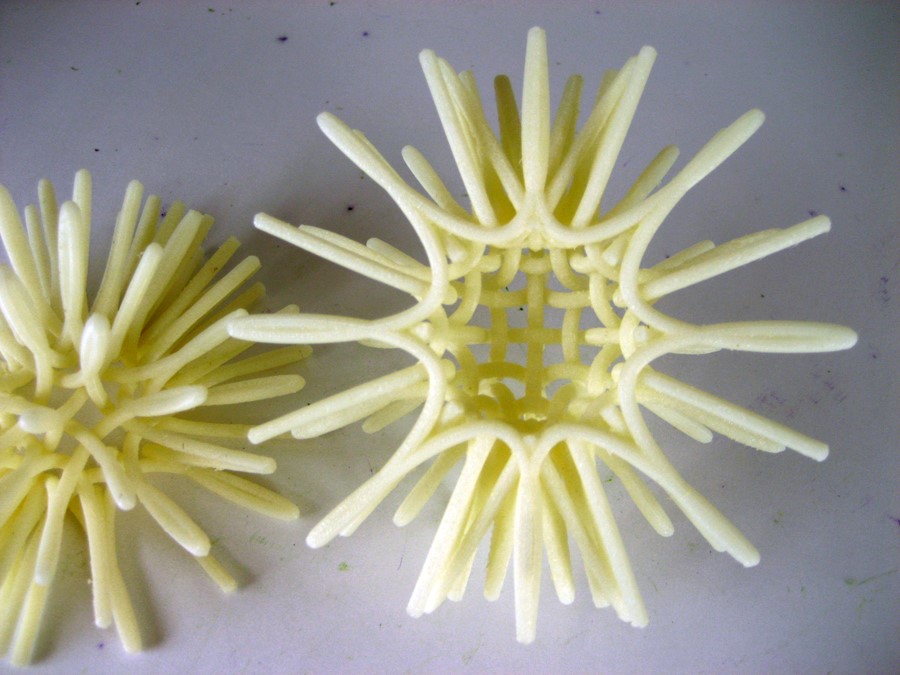
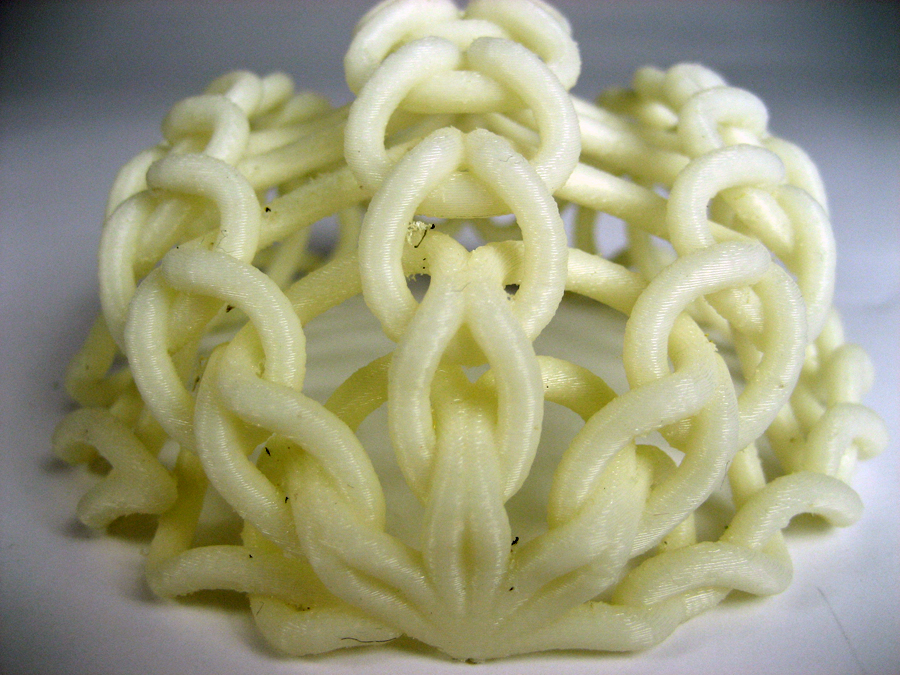
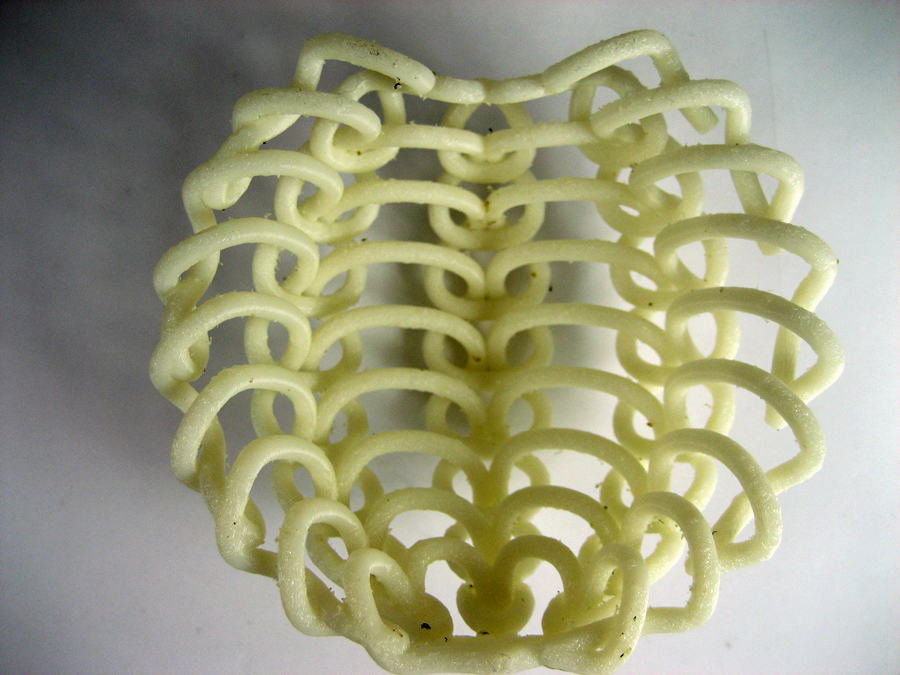
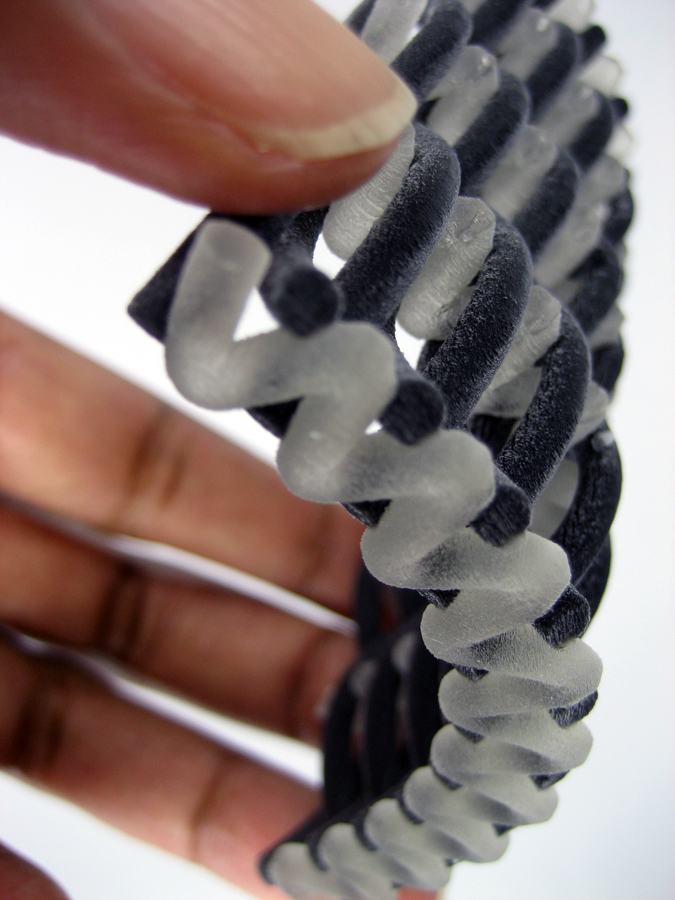
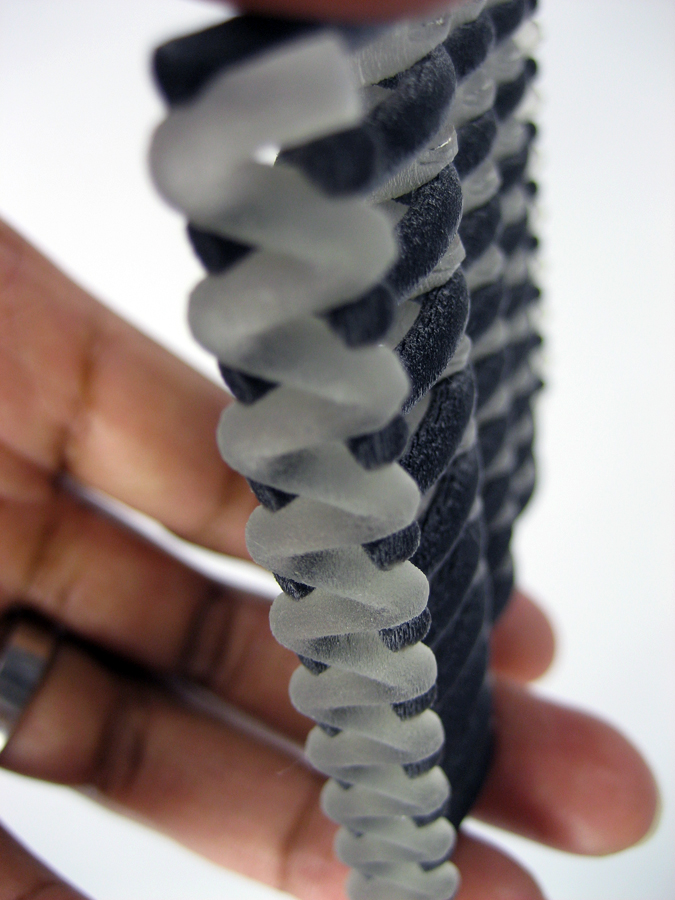
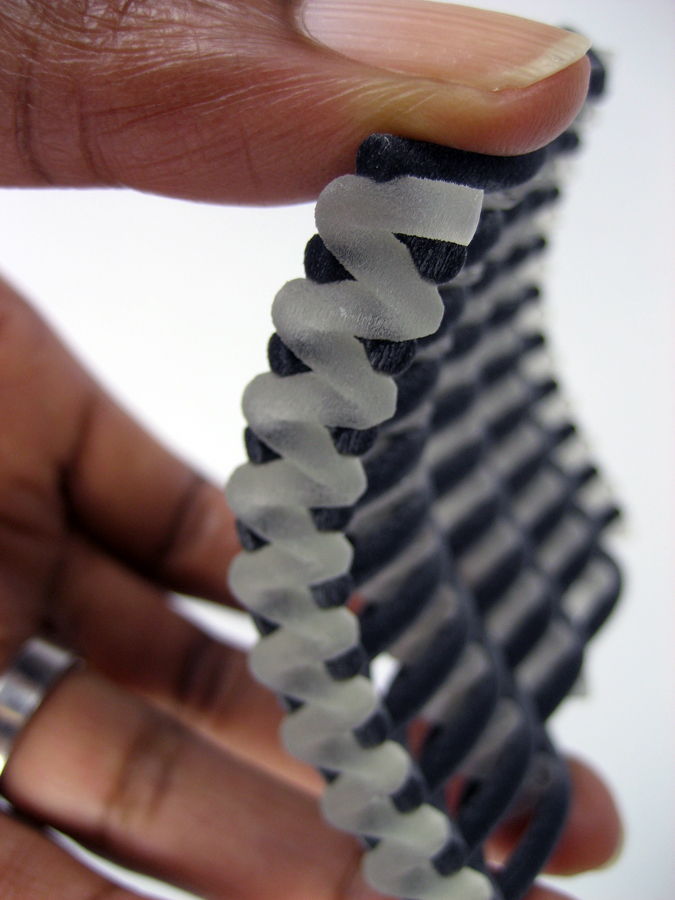

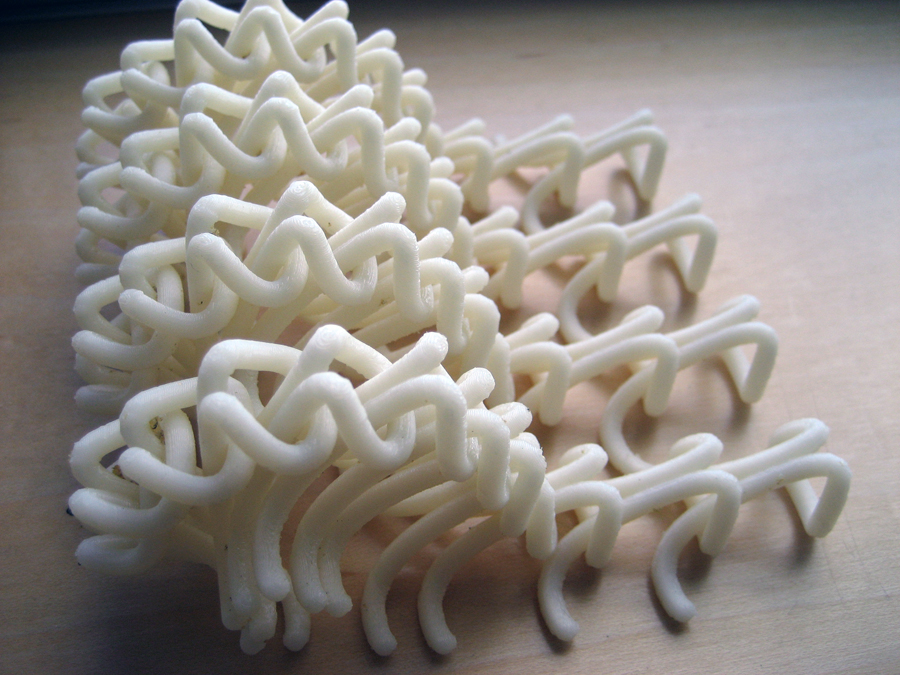
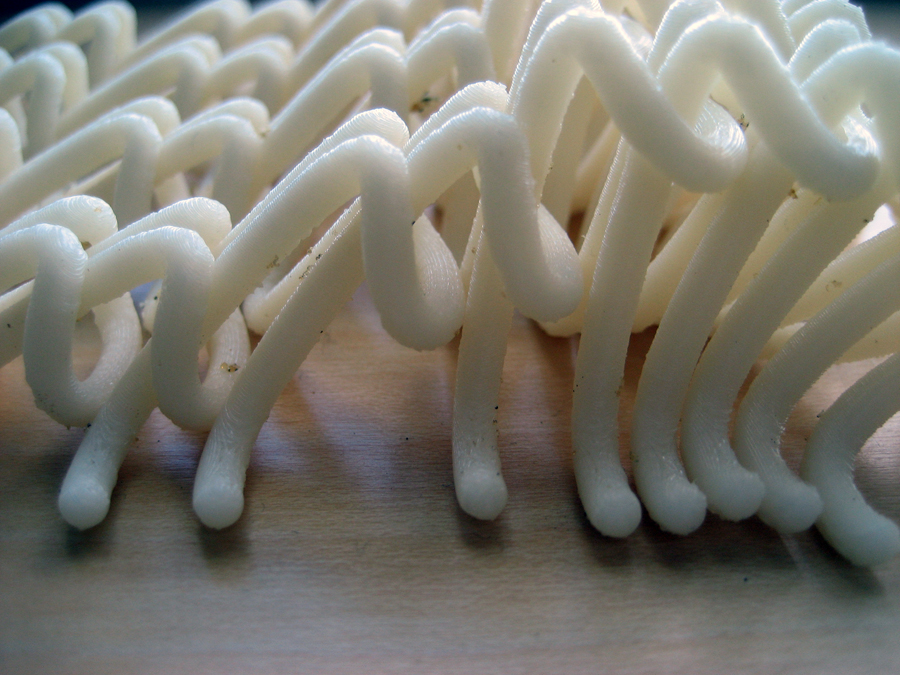
Experiments Using Rhino Python to Make 3D Printed Textiles
This series of experiments were done to learn Rhino Python scripting and continues a project started in Chris Lasch's Rhino scripting course at Stevens Institute. During the time it took me to learn Rhino began to offer methods for programming based in Python which to me made it easier and tied it into a commonly taught program used as basic programming courses. I worked on these over a couple of years and when I had questions was fortunate to have classmates and colleagues I could ask questions.
In addition to using textile patterns to learn scripting I used the computer programming and compared it to the process of making these by hand in a paper 3D Printed Textiles: Translation of Form Active Structures and Synthetic Knowledge Generation. I looked at how the structures of different kinds of textiles helped me learn how to classify their differences as well as what could be shared between the structures. For me it was a fun project and a way to learn scripting in a way that made sense to me. As I got more into these I tried to introduce movement to the textiles by adding rubber and plastic material as well as setting parameters in the program for my piping which meant that the piping would not intersect.
Friends in Learning: Skylar Tibbets, Ari Kardassis, Nick Desbiens and Alan Tsai